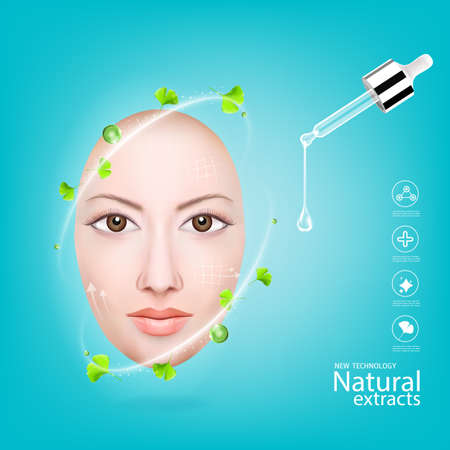Understanding Post-Procedure Recovery Needs
In the United States, dermatological and cosmetic procedures have become increasingly mainstream, with millions of Americans turning to treatments like laser resurfacing, chemical peels, microneedling, and injectable fillers each year. While these interventions can deliver impressive results, they also trigger a cascade of skin responses that require careful management. Common post-procedure concerns include redness, swelling, irritation, dehydration, and an increased risk of infection or pigmentation changes. The healing process varies depending on the depth and intensity of the treatment but typically involves a period where the skin barrier is compromised and more vulnerable to environmental stressors. As a result, choosing supportive skincare that facilitates rapid recovery while minimizing discomfort is essential. U.S. patients and practitioners alike are prioritizing products that promote moisture retention, accelerate barrier repair, and soothe inflammation—making ingredients like hyaluronic acid a focal point in post-procedure care strategies.
2. Hyaluronic Acid: What It Is and How It Works
Hyaluronic acid (HA) has become a buzzword in both skincare and post-procedure recovery circles, but its benefits are backed by serious science. Naturally found in the human body—most abundantly in the skin, eyes, and connective tissues—this molecule is renowned for its extraordinary ability to attract and retain moisture. In fact, hyaluronic acid can hold up to 1,000 times its weight in water, making it a key component for maintaining skin hydration, elasticity, and plumpness.
But what makes HA especially vital after cosmetic procedures such as laser treatments, chemical peels, or microneedling? During these procedures, the skin’s barrier can be temporarily compromised, leading to increased dryness, redness, and sensitivity. Applying hyaluronic acid topically helps replenish lost moisture, soothes irritation, and supports faster healing by creating an optimal environment for skin regeneration. This is why many dermatologists recommend HA-infused products during post-procedure care routines.
| Property | Description | Benefit in Recovery |
|---|---|---|
| Hydration | Binds water molecules to the skin | Prevents dryness and flaking |
| Soothing Effect | Reduces redness and inflammation | Calms post-procedure irritation |
| Barrier Support | Enhances skin’s natural protective layer | Speeds up healing process |
| Compatibility | Non-irritating and safe for sensitive skin | Suitable for all skin types, including post-treatment skin |
Scientific studies continue to validate hyaluronic acid’s efficacy in wound healing and tissue repair. According to research published in peer-reviewed dermatology journals, HA not only accelerates epithelial regeneration but also reduces scarring risk. Its lightweight texture means it can be layered with other recovery essentials like sunscreen or gentle moisturizers without clogging pores or causing adverse reactions. As more Americans seek minimally invasive aesthetic procedures, understanding the foundational role of hyaluronic acid in recovery protocols becomes crucial for achieving optimal results.

3. Key Benefits of Hyaluronic Acid for Post-Procedure Skin
Hyaluronic acid has become a gold standard in post-procedure skincare for good reason. Its multifunctional benefits address the most pressing needs of skin recovering from dermatological treatments, whether you’ve had a chemical peel, laser resurfacing, microneedling, or injectables. Here’s why hyaluronic acid deserves a prime spot in your post-procedure recovery routine:
Hydration Powerhouse
First and foremost, hyaluronic acid is celebrated for its ability to draw and retain moisture—up to 1,000 times its weight in water. After an in-office treatment, your skin often struggles with dehydration and tightness as its natural barrier is temporarily compromised. Incorporating hyaluronic acid helps replenish lost moisture instantly, providing a plump, supple feel that’s crucial for optimal healing and comfort.
Barrier Repair Support
Many aesthetic procedures intentionally disrupt the skin’s protective barrier to stimulate renewal. While effective, this leaves skin vulnerable to irritation and environmental aggressors. Hyaluronic acid acts as a supportive layer, reinforcing the skin’s natural defense and accelerating barrier repair. This is essential for preventing excessive dryness, sensitivity, and potential complications during the delicate post-procedure window.
Soothing Inflammation
Irritation and inflammation are almost inevitable after cosmetic treatments. The soothing properties of hyaluronic acid help calm redness, reduce swelling, and minimize discomfort. By creating a moist environment and supporting cellular repair, it promotes faster resolution of inflammatory symptoms—helping you get back to your regular routine with confidence.
Why These Benefits Matter During Recovery
The post-procedure period is when your skin is most vulnerable and in need of targeted care. Hydration reduces the risk of flaking and cracking; barrier support defends against infection or further irritation; while anti-inflammatory effects speed up visible recovery time. Together, these benefits not only enhance comfort but also optimize results—making hyaluronic acid an indispensable ally in modern post-procedure skincare regimens across America.
4. How to Choose Hyaluronic Acid Products: Ingredients and Formulations
When it comes to post-procedure recovery, not all hyaluronic acid (HA) products are created equal. Patients with sensitive or healing skin require formulations that prioritize safety, efficacy, and purity. Selecting the right HA product involves careful evaluation of its ingredients, sourcing, and clinical validation. Here’s what you need to know:
Key Criteria for Choosing Medical-Grade HA Products
| Criteria | Why It Matters | What to Look For |
|---|---|---|
| Medical-Grade Quality | Ensures the highest purity and safety standards for compromised skin | Products labeled as “medical-grade” or recommended by dermatologists and plastic surgeons |
| Clean Ingredients | Reduces the risk of irritation and allergic reactions during healing | No parabens, sulfates, fragrances, or unnecessary fillers; hypoallergenic claims are a plus |
| Clinically Proven Efficacy | Backs up claims with data for improved confidence in outcomes | Look for products with published studies or FDA-clearance for use after aesthetic procedures |
| Molecular Weight Variation | Affects absorption and hydration depth in the skin layers | Formulas with multi-molecular weight HA provide both surface and deep-layer hydration |
| Packaging & Preservation | Keeps HA stable and effective while preventing contamination on vulnerable skin | Airless pumps or single-use ampoules; avoid jars that require dipping fingers in repeatedly |
Ingredients to Prioritize and Avoid Post-Procedure
- Prioritize: Pure hyaluronic acid (sodium hyaluronate), panthenol (vitamin B5), ceramides, allantoin—these support hydration, barrier repair, and soothing effects.
- Avoid: Alcohol, synthetic fragrance, essential oils, harsh preservatives (like formaldehyde releasers)—all of which can trigger redness or delay healing.
Clinical Validation: Why It Counts in the U.S. Market
The American skincare market values science-backed solutions. When choosing a post-procedure HA product, look for brands that invest in clinical trials and offer transparent ingredient sourcing. FDA-cleared or dermatologist-recommended products often provide greater peace of mind for patients navigating sensitive skin recovery.
Takeaway: Customized Solutions for Healing Skin
Selecting the best HA product post-procedure isn’t just about grabbing any serum off the shelf—it’s about matching formulation science with your unique skin needs. Prioritize medical-grade, clean-label options with proven results to ensure a safe, effective recovery journey after any cosmetic intervention.
5. Top Hyaluronic Acid Products Recommended by U.S. Derms
When it comes to post-procedure skincare, American dermatologists consistently recommend specific hyaluronic acid products for their proven efficacy and safety. Below is a curated list of best-selling and dermatologist-favorite HA serums, creams, and gels that are widely available in the United States, making them accessible options for anyone recovering from in-office treatments.
1. SkinCeuticals Hydrating B5 Gel
This cult-favorite serum blends pure hyaluronic acid with vitamin B5 to deliver intensive hydration without clogging pores. Dermatologists often suggest this formula for its lightweight texture and ability to soothe sensitized or recently treated skin.
2. Neutrogena Hydro Boost Water Gel
A drugstore staple, this gel-cream offers impressive hydration at an affordable price point. Its fast-absorbing, oil-free formula makes it suitable for all skin types, including those with sensitive or post-procedure skin.
3. La Roche-Posay Hyalu B5 Serum
This French pharmacy favorite is popular among American derms due to its combination of pure hyaluronic acid and madecassoside—a compound known for supporting skin repair. It’s gentle enough for use after microneedling, laser, or chemical peels.
4. CeraVe Hydrating Hyaluronic Acid Serum
CeraVe’s reputation for barrier-supporting ingredients makes this serum a go-to recommendation for compromised skin. With added ceramides and vitamin B5, it helps restore moisture while strengthening the skin’s natural defenses during recovery.
5. Vichy Minéral 89 Face Serum
Formulated with 89% mineral-rich volcanic water and hyaluronic acid, this serum provides a refreshing burst of hydration while fortifying the skin against environmental stressors—an ideal choice for those healing from procedures in urban environments.
What Makes These Products Stand Out?
All these hyaluronic acid formulas are fragrance-free or contain minimal irritants, making them safe bets for post-procedure care. They have been tested and recommended by dermatologists across the U.S., ensuring both effectiveness and accessibility through major retailers or online platforms. When choosing an HA product after a cosmetic procedure, always consult your provider to tailor recommendations to your unique needs—but these favorites are a trusted starting point for optimal recovery.
6. Tips for Safe and Effective Use During Recovery
For American patients looking to maximize the benefits of hyaluronic acid (HA) in their post-procedure recovery, following best practices is essential for optimal results and safety. Here are practical tips on application, frequency, and integrating HA with other elements of your post-procedure skincare routine.
Application: Less Is More
Start with clean, dry skin to ensure effective absorption. Apply a pea-sized amount of your HA serum or cream gently across treated areas using clean fingertips, avoiding aggressive rubbing or massaging that could irritate sensitive skin. Focus on patting the product in, particularly around delicate areas impacted by procedures such as microneedling, chemical peels, or laser treatments.
Frequency: Consistency Counts
Most dermatologists recommend applying HA twice daily—once in the morning and once at night—for sustained hydration and support during healing. However, if your provider suggests otherwise based on your specific procedure or skin type, always follow their advice. In the first 48-72 hours post-treatment, consider pairing HA with a gentle, fragrance-free moisturizer to lock in moisture and minimize potential dryness or peeling.
Combining With Other Post-Procedure Protocols
Layering Wisely
If you’re using additional products like ceramide creams, gentle cleansers, or prescribed topicals, apply HA immediately after cleansing but before heavier creams or occlusives. This ensures it draws water into the skin without being blocked by thicker formulas.
Avoid Potential Irritants
Skip active ingredients like retinoids, strong acids, or exfoliants until your provider gives you the green light. These can interfere with healing and reduce the soothing benefits of HA. Sunscreen is a must for all American patients post-procedure—opt for a mineral-based SPF as your final step each morning to prevent pigmentation and further irritation.
When in Doubt: Consult Your Provider
Remember that every recovery journey is unique. Before introducing new products or routines, check in with your dermatologist or aesthetic provider for personalized recommendations tailored to your skin’s needs and the specifics of your procedure.


